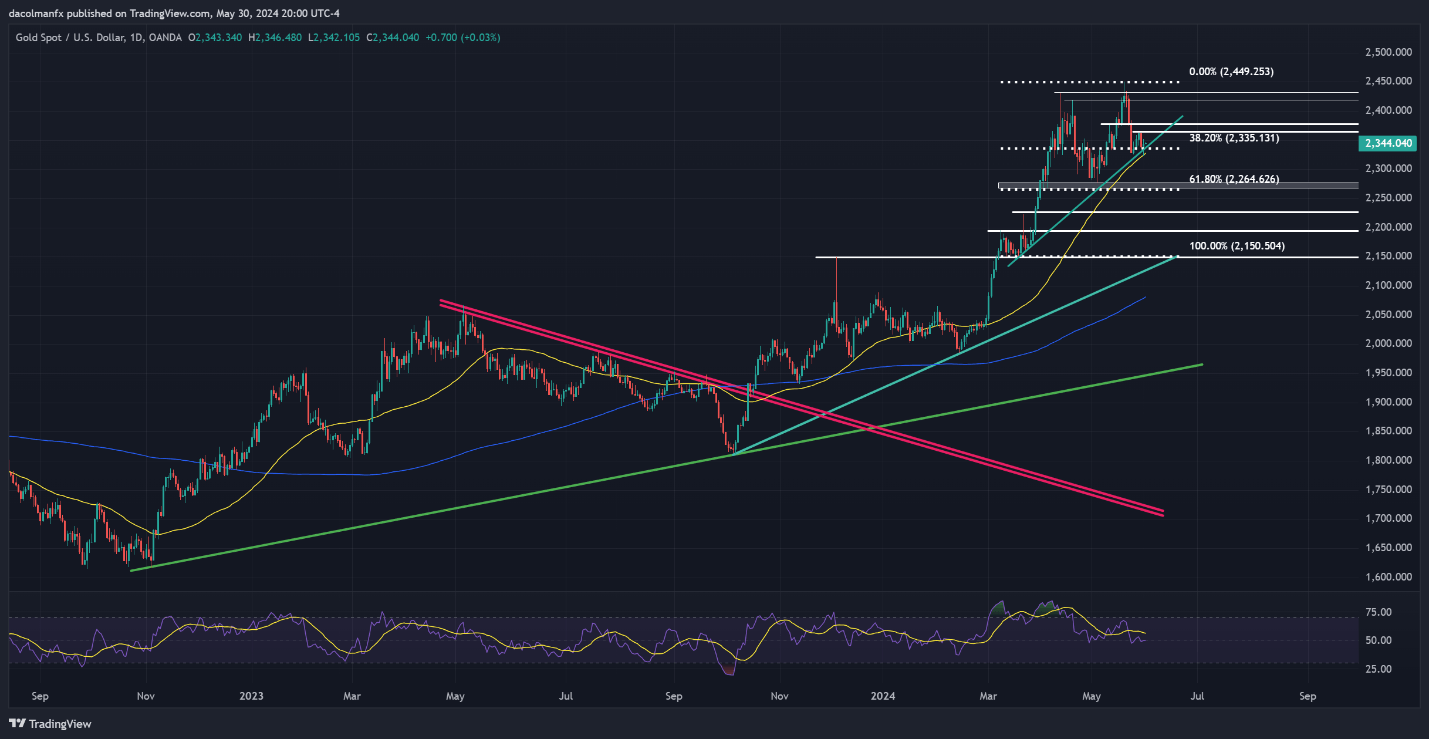Gold Price Forecast: Bearish Continuation in Play with Key Support Under Threat
- August 19, 2024
- Category: Blockchain
Most Read: Market Sentiment Analysis & Outlook - EUR/USD, USD/CAD, Dow Jones 30
Gold (XAU/ USD ) has enjoyed a remarkable rally this year, peaking near $2,450 in early May. However, the upward impetus has recently started to wane, with bullion retreating over 4% from its highs in the past few trading sessions. This price correction suggests a shift in investor sentiment, with bulls likely seeking greener pastures.
With underlying and fundamental drivers reasserting themselves, gold’s weakness could persist in the near term. Sticky inflation , which could force the U.S. central bank to maintain a restrictive stance for longer, could reinforce the bearish case for non-yielding assets, creating a hostile environment for the yellow metal.
Acquire the knowledge needed for maintaining trading consistency. Grab your "How to Trade Gold" guide for invaluable insights and tips!
For traders entertaining short positions, a crucial price point to watch is the $2,335 support zone. This area represents a confluence of technical indicators, including a key trendline and the 38.2% Fibonacci retracement of the March-May rally. A decisive break below $2,335, accompanied by higher-than-average trading volume, would be a strong selling signal.
If the price falls through $2,335, the next line in the sand is the 50-day simple moving average, currently sitting at $2,325. Breaching this support could trigger a deeper pullback, with potential downside targets around $2,265, a critical Fibonacci level just below this month's swing low.
However, the scenario isn't entirely one-sided. If the bulls regain control and push prices higher, initial resistance looms at $2,365, followed by $2,377. A push past this latter ceiling could dampen bearish sentiment and pave the way for a rally toward $2,420. Continued strength could even bring the all-time high back into play.
Wondering about gold's future trajectory and the catalysts that will drive volatility? Find all the answers in our free quarterly forecast. Download it now!
GOLD PRICE TECHNICAL CHART


